Dimensions:
A dimension is a field that can be considered an independent variable.Dimensions typically produce headers when added to the rows or columns shelves in the view. By default,Tableau treats any field containing qualitative, categorical information as a dimension. This includes, for instance, any field with text or dates values.
Measures:
A measure is a field that is a dependent variable; that is, its value is a function of one or more dimensions.Measures typically produce axes when added to the rows or columns shelves. By default, Tableau treats any field containing numeric (quantitative) information as a measure.
Duplicate Sheets:
Duplicating a sheet allows you to easily make a copy of a worksheet, dashboard, or story. You can then modify the sheet without losing the original version. To duplicate the active sheet, right-click the sheet tab (control-click on Mac) and select Duplicate Sheet.
Crosstab:
Cross tab (sometimes referred to as a Pivot Table) is a table that summarizes data in rows and columns of text. It is a convenient way to display the numbers associated with the data view.
To quickly create a cross-tab from a view, right-click the sheet tab (control-click on Mac) and select Duplicate as Crosstab. You can also selectWorksheet > Duplicate as Crosstab. This command inserts a new worksheet into your workbook and populates the sheet with a cross-tab view of the data from the original worksheet. (Dashboards and stories cannot be duplicated as crosstabs.)
There are other ways to see the numbers behind the data views. For example, you can mouse-over any mark to display the associated numbers in a tooltip. Click the View Data command at the bottom of the tooltip to view underlying data. You can copy and paste the data into Excel or another application.
NOTE:
Workbook:
Each work book can contain worksheets and dashboards.Tableau workbook files have the .twb file extension and are marked with the workbook icon. Workbooks hold one or more worksheets and dashboards
Worksheet: Worksheet is where you build views of your data by dragging and dropping fields onto shelves.
Dashboard: A dashboard is a combination of several worksheets that you can arrange for presentation or to monitor.
NOTE: The sheets, whether worksheets or dashboards, display along the bottom of the workbook as tabs.
Bookmarks: Tableau bookmark files have the .tbm file extensions and are marked with the bookmark icon. Bookmarks contain a single worksheet and are an easy way to quickly share your work.
Packaged Workbooks: Tableau packaged workbooks have the .twbx file extension and are marked with the the packaged workbook icon. Packaged workbook contain a workbook along with any supporting local file data sources and background images. This format is the best way to package your work for sharing with others who don't have access to the data.
Data Extract Files: Tableau data extract files have the .tde file extension and are marked with the extract icon. Extract files are a local copy of a subset or entire data source that you can use to share data work offline, and improve database performance.
Data Connection Files: Tableau data connection files have the .tds file extension and are marked with the data connection icon. Data Connection files are shortcuts for quickly connceting to data source that you use often.
Tableau Repository: The Tableau repository holds workbooks Bookmarks and data sources.
Located in a folder called My Tableau Repository inside of your My Documents folder.
File Types:
Tableau Workbook (.twb)
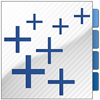 This file type is probably the most common that we will see and create when working with Tableau. It is in XML format (try editing it in a text editor) and contains all the information on each sheet and dashboard that is contained within your workbook. Information such as what fields are being used in each view and how measures are being aggregated, the formatting and styles applied and any other setup you’ve made to a sheet or dashboard (e.g. whether a quick filter is shown). It also includes data source connection information and any metadata you have created for that connection.
This file type is probably the most common that we will see and create when working with Tableau. It is in XML format (try editing it in a text editor) and contains all the information on each sheet and dashboard that is contained within your workbook. Information such as what fields are being used in each view and how measures are being aggregated, the formatting and styles applied and any other setup you’ve made to a sheet or dashboard (e.g. whether a quick filter is shown). It also includes data source connection information and any metadata you have created for that connection.
To create a .twb file, from Tableau Desktop, select File > Save
Tableau Packaged Workbook (.twbx)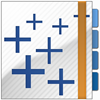
A Packaged Workbook however, combines the information in a workbook and bundles it with any local data – i.e. data that is not on a server. You can think of it as a zip file, and indeed if you rename the .twbx file as a .zip you can open it with windows to see the .twb and the corresponding data files. A .twbx will also include any custom images, as well as any custom geocoding you may have used in your work.
The primary reason you would save your work as a Packaged Workbook is so that you can share it with other Tableau Desktop users, or for others to open using Tableau Reader.
To create a .twbx file, from Tableau Desktop, select File > Save As and then select the .twbx option from the dropdown menu at the bottom of the Save As dialogue box
Tableau Datasource (.tds)
 When you connect to your data for the fist time, you may have a little bit of data ‘modelling’ to do – setting the right data types, changing default aggregations, setting default colours, creating some custom calculated fields etc etc. You are giving Tableau information about the data you will be using – you are setting up its ‘metadata’. When you want to connect to this data again, you don’t want to really go through all this data modelling a second time so instead you can save your metadata as a .tds file (again, it is saved in XML format) and connect to your data though this file instead. You could also distribute this file so that your colleagues have access to the nice formatting and custom fields you have worked to set up.
When you connect to your data for the fist time, you may have a little bit of data ‘modelling’ to do – setting the right data types, changing default aggregations, setting default colours, creating some custom calculated fields etc etc. You are giving Tableau information about the data you will be using – you are setting up its ‘metadata’. When you want to connect to this data again, you don’t want to really go through all this data modelling a second time so instead you can save your metadata as a .tds file (again, it is saved in XML format) and connect to your data though this file instead. You could also distribute this file so that your colleagues have access to the nice formatting and custom fields you have worked to set up.
Tableau is clever enough to pick up new columns/fields in the data source if they appear and column ordering does not matter but if column names change or disappear completely, you will need to reconfigure.
To create a .tds file, from Tableau Desktop, right click on your data source connection and select Add to Saved Data Sources. Alternatively you can publish the .tds to Tableau Server by right clicking and selecting Publish to Server instead
Tableau Packaged Datasource (.tdsx)
Just like the fact that a .twb does not contain any of the data but a .twbx does, a .tds file only contains the information about the data, not the data itself. A Tableau Packaged Datasource (.tdsx), however, contains the data too.
You would create this type of file instead of a .tds if you wanted to share the connection information with someone else who did not have access to the underlying data (for example if it was stored on your local machine)
To create a .tdsx file, from the Add to Saved Data Source dialogue box, change the file type from the dropdown at the bottom.
Tableau Data Extract (.tde)
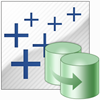 Tableau Data Extracts are highly optimised, highly compressed, subsets of your data stored in a columnar database file. When you connect to data using Tableau you can either connect ‘Live’ or you can extract the data into a .tde. Data extracts are used to radically improve performance, particularly when connecting to slow databases or slow files (e.g. CSVs), as well as enabling additional functionality (try doing a count distinct whilst connected live to Excel) and offline analysis.
Tableau Data Extracts are highly optimised, highly compressed, subsets of your data stored in a columnar database file. When you connect to data using Tableau you can either connect ‘Live’ or you can extract the data into a .tde. Data extracts are used to radically improve performance, particularly when connecting to slow databases or slow files (e.g. CSVs), as well as enabling additional functionality (try doing a count distinct whilst connected live to Excel) and offline analysis.
You can also use extracts to perform some pre-aggregation of your data, and it can stop load / contention problems that may arise if you are connecting live to a database. You’ll also HAVE to use an extract if you want to publish to Tableau Public.
The primary disadvantage to using an extract is that your Tableau viz is no longer pointing to the ‘live’ data source – if that data source updates then your viz will not until you refresh the extract. Fortunately refreshing an extract is only a few clicks away, or you can set up your Tableau Server to refresh the extract on a schedule.
To create a .tde file, when you first connect to data, chose the Import all data or the Import some data option. If you are already connected live, right click on your data source connection and select Extract Data.
Tableau Bookmark (.tbm)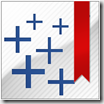
A slightly lesser known Tableau file type is the Tableau bookmark. This file is a bit like an export of one single worksheet, which you can then import into another workbook to save you recreating the view from scratch. Tableau 8.1 introduces functionality to help copy and paste worksheets from one workbook to another, so this file type may become used less but it can still be handy if you regularly use a particular view in many of the workbooks you create (a header page or appendix, for example)
To create a .tbm file, click Window > Bookmark > Create Bookmark. To reuse a bookmark, clcik Window > [bookmark name]. Note that you cannot create a bookmark from a dashboard page.
Tableau Map Source (.tms)
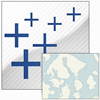 When plotting maps with Tableau, the software will connect to it’s mapping provider (Urban Mapping) to load the relevant map tiles in the background to plot your data points against. From the Map menu in Tableau Desktop, you have the option to add your own WMS server so that images from this source are loaded, rather than images from Urban Mapping. After you have added a new mapping source, you can share this set up with others by creating a distributing a Tableau Map Source file.
When plotting maps with Tableau, the software will connect to it’s mapping provider (Urban Mapping) to load the relevant map tiles in the background to plot your data points against. From the Map menu in Tableau Desktop, you have the option to add your own WMS server so that images from this source are loaded, rather than images from Urban Mapping. After you have added a new mapping source, you can share this set up with others by creating a distributing a Tableau Map Source file.
To create a .tms file, click on Map > Background Maps > WMS Servers and from the WMS Server Connections dialogue window, select Export. If you want this mapping source to always be available to your workbooks, add the .tms file to your Mapsources directory within My Tableau Repository
Tableau Preferences (.tps)
The Tableau Preferences file can be used to create custom colour palettes so that using consistent colours (e.g your corporate colour schemes) across all your workbooks is made easier. This file is kept in your My Tableau Repository directory and is held in XML format.

The great service in this blog and the nice technology is visible in this blog. I am really very happy for the nice approach is visible in this blog and thank you very much for using the nice technology in this blog
ReplyDeleteTableau Online Training|
SAS Online Training |
R Programming Online Training|
It's Very Nice and Such an ideal piece of blog
ReplyDeleteTableau Online Training
All are saying the same thing repeatedly, but in your blog I had a chance to get some useful and unique information, I love your writing style very much.nice blog.
ReplyDeleteC and C++ Training Institute in chennai | C and C++ Training Institute in anna nagar | C and C++ Training Institute in omr | C and C++ Training Institute in porur | C and C++ Training Institute in tambaram | C and C++ Training Institute in velachery